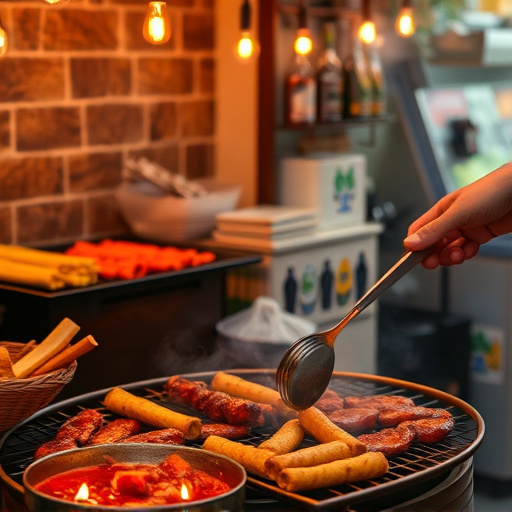Selecting the perfect ribs (baby back or St. Louis-style) is crucial for a successful BBQ rib recipe, as it impacts even cooking and flavor penetration. Slow cooking at low temperatures (195-203°F/91-95°C) for 3-4 hours breaks down collagen, making ribs tender and flavorful. Dry or wet rubs add depth to the taste profile, with dry rubs providing a robust savory crust and wet rubs offering moisture and sweetness. Serving tips include garnishing with herbs and sauces, pairing with coleslaw or cornbread, and offering generous portions alongside cool beverages.
Discover the art of crafting perfect slow-cooked ribs with a smoky flavor profile. This comprehensive guide takes you on a journey through every step of the process, from selecting the ideal ribs for your BBQ recipe to mastering the techniques of low-temperature smoking. Learn about dry rubs vs. wet rubs and explore marinating tips for exceptional taste. Avoid common mistakes and end with serving suggestions that will wow your guests. Elevate your BBQ game with this ultimate BBQ rib recipe.
- Choosing the Right Ribs for Your BBQ Rib Recipe
- The Magic of Slow Cooking for Smoked Flavour Profile
- Dry Rubs vs. Wet Rub: Which One to Use for Your BBQ Ribs?
- Marinating and Seasoning Tips for Optimal Taste
- Smoking at Low Temperatures: Techniques for Tender, Smoky Ribs
- Common Mistakes to Avoid While Cooking Slow-cooked Ribs
- Presentation and Serving Suggestions for Your Delicious BBQ Rib Recipe
Choosing the Right Ribs for Your BBQ Rib Recipe
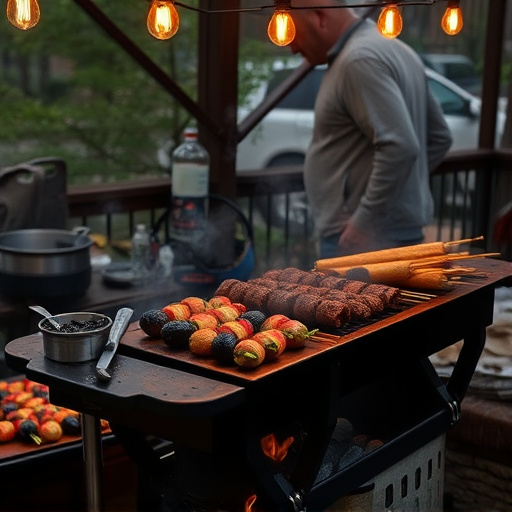
When it comes to crafting the perfect slow-cooked ribs with a smoky flavor profile, selecting the right cut is half the battle won. For your BBQ rib recipe, opt for baby back ribs or St. Louis-style ribs—both are popular choices due to their tender meat and ample marbling. Baby back ribs have a smaller bone structure, making them easier to cook evenly and ensuring every bite is delicious. St. Louis-style ribs, on the other hand, feature a separated spare rib section, offering a unique texture contrast between the meaty ribs and the crispy, flavorful membrane you can remove for an extra smoky kick.
Choosing the right type of ribs allows you to maximize the flavor potential in your BBQ rib recipe. The slow cooking process lets the spices and sauces penetrate the meat, while the smoking technique adds that distinctive, charred taste. Whether you prefer a wet rub or dry spice blend, ensuring your ribs are well-marbled will enhance both the texture and overall flavor profile of your mouthwatering BBQ rib creation.
The Magic of Slow Cooking for Smoked Flavour Profile
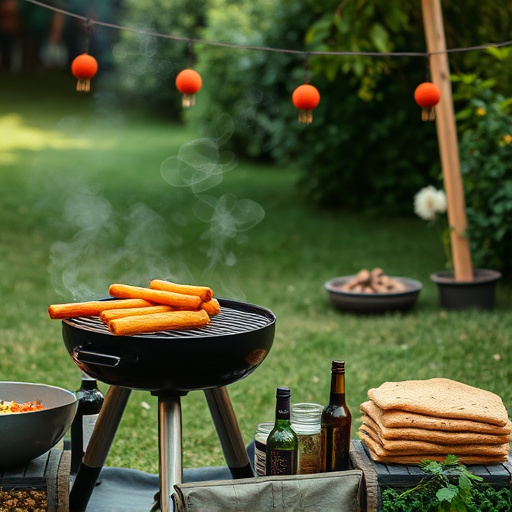
Slow cooking is a true game-changer when it comes to achieving that coveted smoky flavor profile in BBQ rib recipes. The low and slow method allows the meat to break down, becoming tender and succulent while infusing it with a deep, rich smokiness that’s hard to replicate any other way.
By cooking ribs at a leisurely pace, you give time for the flavors to meld and intensify. The smoke, often from wood chips or chunks, gently permeates the meat during the long hours of slow roasting, creating a complex, delicious taste profile that’s both savory and sweet. This method also ensures even cooking, resulting in ribs that are tender all the way through, with that perfect, slightly charred exterior that makes them so irresistible.
Dry Rubs vs. Wet Rub: Which One to Use for Your BBQ Ribs?
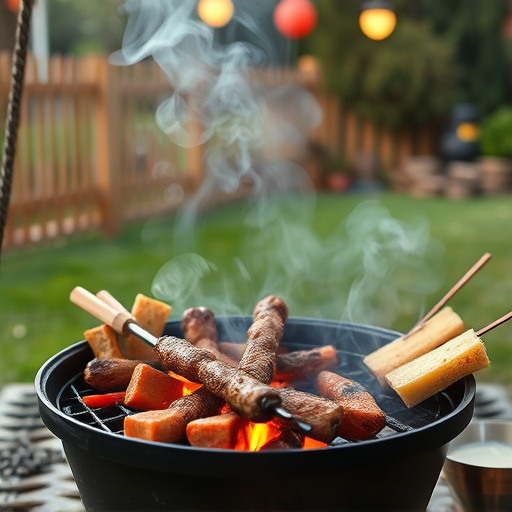
When it comes to seasoning your BBQ rib recipe, there’s a classic debate: dry rubs vs. wet rubs. Both have their merits and can significantly impact the flavor profile of your slow-cooked ribs. Dry rubs are simply a blend of spices, often including salt, pepper, paprika, garlic powder, and various other seasonings. These rubs create a robust, savory taste as they cling to the meat’s surface, allowing for a nice crust and enhancing the overall aroma during the cooking process. They’re perfect if you prefer a more pungent, smoky flavor that stands out.
On the other hand, wet rubs involve mixing spices with an ingredient like brown sugar, vinegar, or even beer. This combination creates a paste that not only adds moisture to the ribs but also glazes them, resulting in a sweeter, more complex taste. Wet rubs tend to be ideal for those who enjoy a balanced blend of sweet and savory flavors. They can also help tenderize the meat slightly due to the added moisture. So, whether you choose a dry rub for a bolder flavor or a wet rub for a sweeter alternative, both approaches will lead to delicious BBQ ribs that’ll satisfy any appetite.
Marinating and Seasoning Tips for Optimal Taste
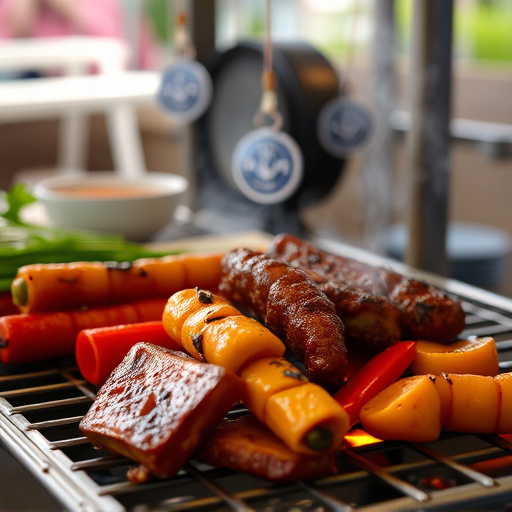
To achieve that mouthwatering, smoky flavor in your BBQ rib recipe, marinating and seasoning are key steps that can’t be overlooked. Start by choosing a high-quality, good-cut rib with plenty of meaty substance—the sturdier the better for slow cooking. Before cooking, a dry rub of coarse salt, black pepper, paprika, garlic powder, and onion powder is essential to penetrate and enhance the meat’s natural flavors.
For an extra kick, consider adding a marinade made from ingredients like olive oil, apple cider vinegar, liquid smoke, and your favorite BBQ sauce. This mixture not only tenderizes the ribs but infuses them with a deeper, richer flavor profile. Remember to let the ribs sit in the refrigerator for at least 2 hours—or even overnight—for the flavors to meld and penetrate the meat before slow cooking them to perfection.
Smoking at Low Temperatures: Techniques for Tender, Smoky Ribs
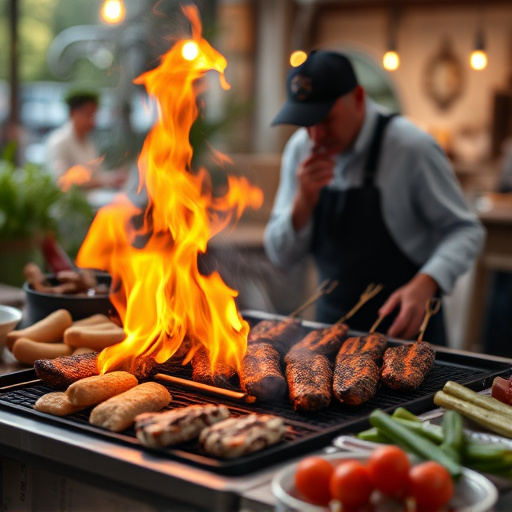
Smoking at low and slow temperatures is a technique that transforms ordinary BBQ rib recipes into mouthwatering, fall-off-the-bone delicacies. The process involves gently cooking ribs over indirect heat, often with wood chips or chunks, to infuse them with a subtle yet intense smoky flavor. By maintaining a consistent temperature below 200°F (93°C), the collagen in the meat slowly breaks down, resulting in tender ribs that simply melt in your mouth.
This method allows for a deeper, more complex smoke flavor compared to high-heat cooking methods. The low and slow approach ensures that the ribs cook evenly, locking in moisture and creating a juicy, succulent texture. Whether you’re using a smoker or a slow cooker, this technique is accessible to all BBQ enthusiasts looking to elevate their rib recipes to the next level.
Common Mistakes to Avoid While Cooking Slow-cooked Ribs
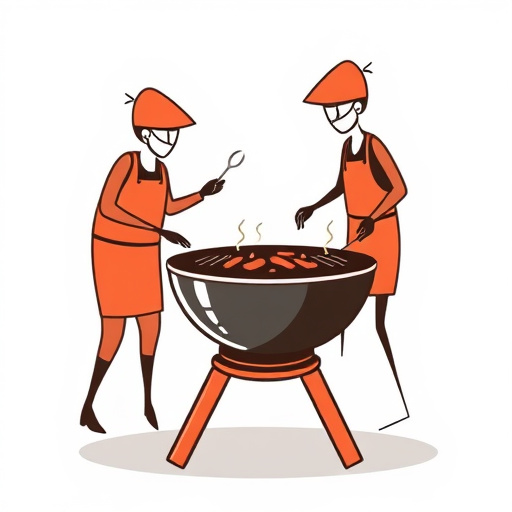
When cooking slow-cooked ribs, a BBQ rib recipe that many stumble upon, there are several common mistakes to avoid for optimal results. One of the biggest blunders is overlooking the importance of seasoning. Ribs require generous amounts of dry rub or marinade to penetrate and enhance their flavor. Skimping on this step can lead to bland, uninspired ribs. Additionally, patience is key; rushing the process by cooking them at higher temperatures or for too short a time will result in tough, chewy meat.
Another frequent error is misjudging the doneness of the ribs. Slow-cooked ribs should be tender and easily pull away from the bone. Using internal temperature as your guide—aiming for 195-203°F (91-95°C)—ensures they reach the perfect level of tenderness without overcooking, which can lead to dryness. Lastly, don’t forget the power of low and slow; maintaining a consistent low heat is crucial for breaking down collagen, making your ribs incredibly tender.
Presentation and Serving Suggestions for Your Delicious BBQ Rib Recipe
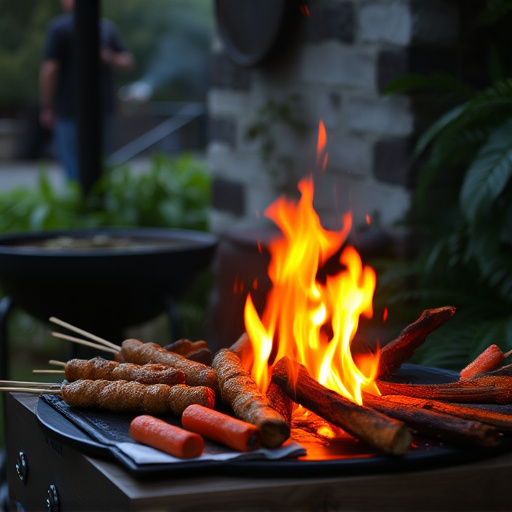
When presenting your slow-cooked ribs with a smoky flavor profile, the key is to highlight the visual appeal and aromatic allure that makes this BBQ rib recipe stand out. Serve them on a large plate or platter, garnished with fresh herbs like rosemary or thyme, and a drizzle of barbecue sauce for an inviting display. Accompanying sides such as coleslaw, cornbread, or baked beans can complement the rich, smoky flavors, creating a cohesive dining experience.
For an optimal serving suggestion, aim for generous portions to ensure satisfaction. The tender ribs should be easily divisible into individual pieces, allowing guests to savor each bite. Pair this delicious BBQ rib recipe with cold beverages like craft beer or iced tea to balance the hearty and flavorful meal.
